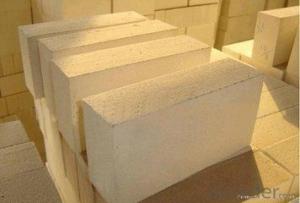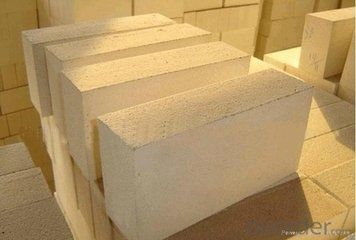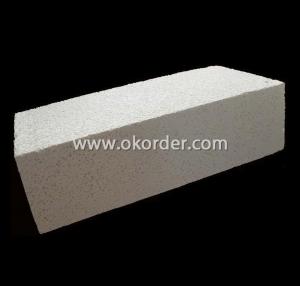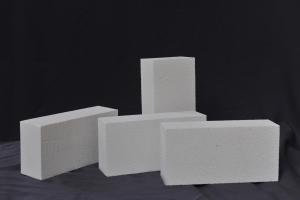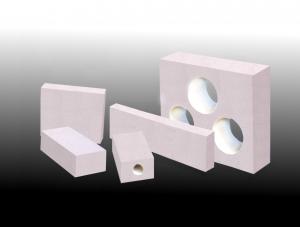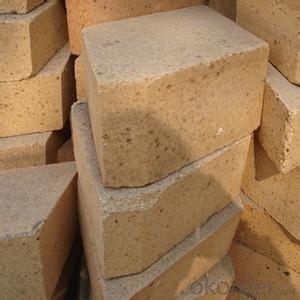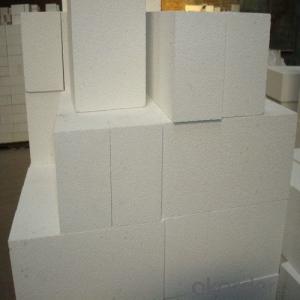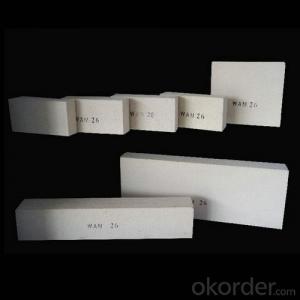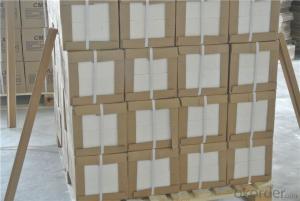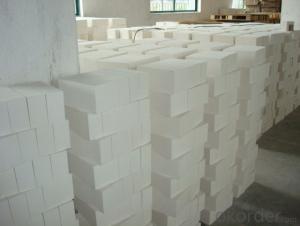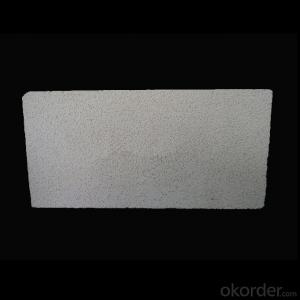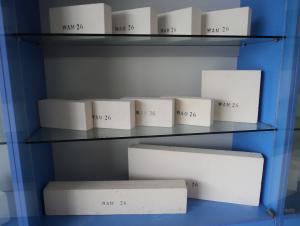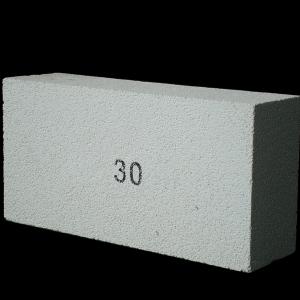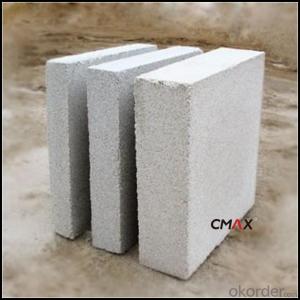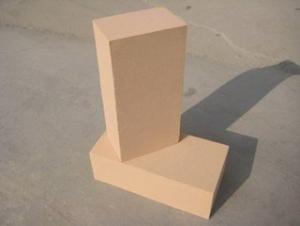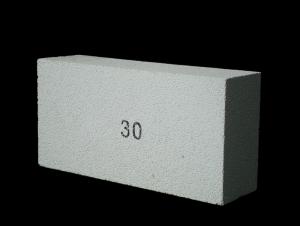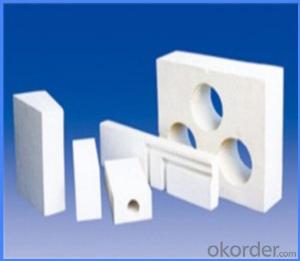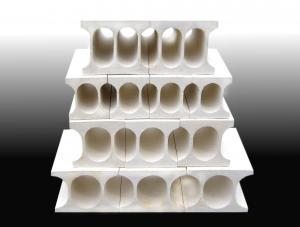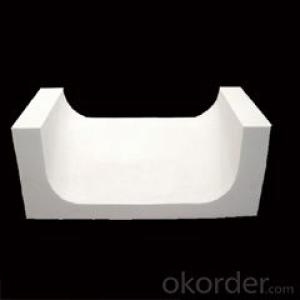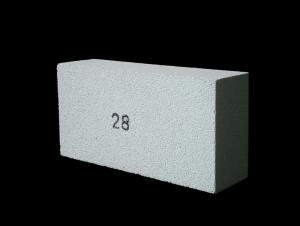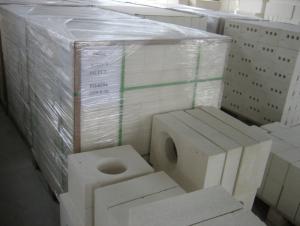High Quality Insulating Fire Brick
- Loading Port:
- China Main Port
- Payment Terms:
- TT OR LC
- Min Order Qty:
- -
- Supply Capability:
- -
OKorder Service Pledge
OKorder Financial Service
You Might Also Like
Thermal insulation brick is introduced
A, fully replace aluminous model board, honeycomb panel, curtain wall, such as common decoration materials, multi-functional integration, a construction can solve the heat preservation decoration two functional requirements,
level off is smooth and beautiful adornment sex is strong.
2, high strength, good rigidity, light seismic and wind resistance, creep, superior performance,
reduce building load and more economic and durable.
Three fire retardant, heat preservation and heat insulation, sound insulation, heat insulation, anti-cracking waterproof, according to 65% of building energy efficiency requirements for construction design.
Four Jin Anhua, easy installation and finishing products, process, shorten the construction period and quality easy to control.
Five, don't use aluminum, steel, keel support, set in the installation, reduce the gap between the insulation
board and wall body.Increased security system.
Six, no radiation, green environmental protection, can be widely used in all kinds of public buildings and home interior decoration.
Seven, installed with cement, save a lot of material, manpower and time.Reduce the air pollution caused by
production cement burning, accord with the requirement of green low carbon environmental protection.
Eight, more than 70 carrier lifetime, more than 20 years of decoration life for a long time, to adapt to a variety
of areas such as zha climate and complex environment.With the quality of class international aluminous model board,
aluminum veneer and steel hanging stone, compared to reduce bearing 30% to 90%
Nine, double efficacy, shorten time li
- Q: Is it necessary to use mortar when installing insulating fire bricks?
- Yes, it is necessary to use mortar when installing insulating fire bricks. Mortar acts as a bonding agent between the bricks, ensuring stability and preventing heat loss. It also helps to seal any gaps or cracks, enhancing the insulation properties of the bricks.
- Q: Can insulating fire bricks be used in high-temperature insulation for aerospace applications?
- Insulating fire bricks are capable of being utilized for high-temperature insulation in aerospace applications. Constructed from lightweight refractory materials possessing exceptional insulating properties, these bricks can endure extreme temperatures. The bricks possess a low thermal conductivity, effectively decreasing heat transfer and maintaining the desired temperature within aerospace components. Within the realm of aerospace applications, environments of elevated temperatures are commonly encountered, such as within rocket engines, exhaust systems, and thermal protection systems. Insulating fire bricks can be employed in these applications to furnish thermal insulation, shielding delicate components from excessive heat and averting heat loss to the surroundings. Furthermore, insulating fire bricks are renowned for their exceptional resistance to thermal shock, thereby enabling them to endure sudden temperature changes without cracking or deteriorating. This attribute is of utmost importance in aerospace applications, where components undergo substantial temperature variations during launch, re-entry, or other operational phases. Moreover, insulating fire bricks possess lightweight characteristics, which can prove advantageous in aerospace applications where weight reduction is crucial for fuel efficiency and overall performance. By implementing insulating fire bricks, aerospace engineers can achieve efficient thermal insulation while minimizing the added weight to the system. All in all, insulating fire bricks constitute a viable solution for high-temperature insulation in aerospace applications. Their exceptional insulating properties, resistance to thermal shock, and lightweight nature render them suitable for safeguarding critical aerospace components within environments of extreme temperatures.
- Q: Do insulating fire bricks expand and contract with temperature changes?
- Insulating fire bricks do indeed undergo expansion and contraction in response to temperature variations. Similar to all other materials, exposure to heat causes these bricks to expand, whereas cooling leads to their contraction. This expansion and contraction phenomenon arises from the material's thermal expansion coefficient, which dictates the degree of expansion or contraction in relation to temperature changes. It is crucial to acknowledge this characteristic when utilizing insulating fire bricks in situations that involve anticipated temperature fluctuations. Neglecting to account for the expansion and contraction may result in structural harm or the formation of cracks.
- Q: Do insulating fire bricks have a low thermal conductivity?
- Yes, insulating fire bricks have a low thermal conductivity. These bricks are specifically designed to minimize heat transfer, making them an excellent choice for applications that require thermal insulation. Compared to regular fire bricks, insulating fire bricks have a lower density and higher porosity, which helps to reduce the flow of heat through conduction. This low thermal conductivity allows the bricks to act as effective barriers against heat transfer, keeping the surrounding areas cooler and increasing energy efficiency.
- Q: Are insulating fire bricks resistant to erosion?
- Yes, insulating fire bricks are resistant to erosion.
- Q: Can insulating fire bricks be used in ladles and tundishes?
- Insulating fire bricks prove to be suitable for ladles and tundishes as they are specifically designed to offer high-temperature insulation and thermal stability. These bricks are essential in applications where heat retention plays a pivotal role. Ladles and tundishes are extensively utilized in the steel and foundry sectors for the transportation and pouring of molten metal. By utilizing insulating fire bricks in these vessels, one can effectively minimize heat loss and maintain the desired temperature of the metal. Moreover, these bricks exhibit resilience towards thermal shock and chemical corrosion, which are common obstacles in such extreme temperature environments. Consequently, the utilization of insulating fire bricks in ladles and tundishes ultimately enhances energy efficiency, reduces heat loss, and improves the overall performance and lifespan of these vital pieces of equipment in the metal processing industry.
- Q: Can insulating fire bricks be used in the construction of ceramic tile kilns?
- Yes, insulating fire bricks can be used in the construction of ceramic tile kilns. These bricks are designed to have low thermal conductivity, which helps to retain heat within the kiln. This insulation property is crucial for maintaining high temperatures and consistent firing conditions in ceramic tile kilns. Additionally, insulating fire bricks are lightweight and durable, making them suitable for kiln construction.
- Q: Are insulating fire bricks suitable for the insulation of chimneys?
- Yes, insulating fire bricks are suitable for the insulation of chimneys. These bricks are designed to withstand high temperatures and provide excellent thermal insulation, making them an ideal choice for chimney insulation. They help to prevent heat loss, improve energy efficiency, and reduce the risk of chimney fires.
- Q: Can insulating fire bricks be used for insulation in solar thermal systems?
- Yes, insulating fire bricks can be used for insulation in solar thermal systems. These bricks have high insulating properties and can withstand high temperatures, making them suitable for use in solar thermal systems where insulation is crucial to maximize heat retention and efficiency.
- Q: Are insulating fire bricks resistant to erosion from flowing gases or liquids?
- Yes, insulating fire bricks are generally resistant to erosion from flowing gases or liquids. These bricks are designed to withstand high temperatures and are made from specialized materials that have excellent resistance to erosion.
Send your message to us
High Quality Insulating Fire Brick
- Loading Port:
- China Main Port
- Payment Terms:
- TT OR LC
- Min Order Qty:
- -
- Supply Capability:
- -
OKorder Service Pledge
OKorder Financial Service
Similar products
Hot products
Hot Searches
Related keywords
